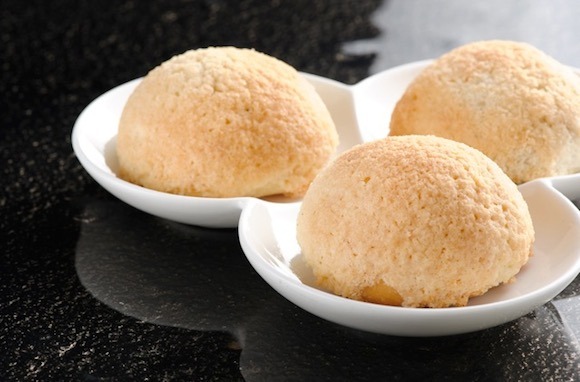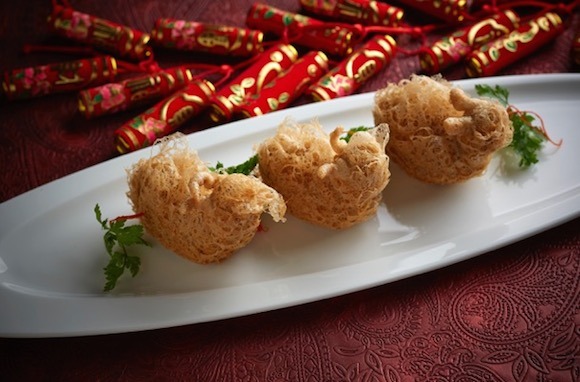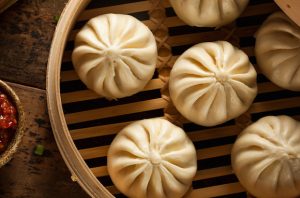On past visits to Hong Kong I always got the impression that this was the place, the only place, to get really great dim sum. I live in LA part time and New York City part time, and try as I might I never found dim sum that equaled what I enjoyed in Hong Kong. So on a recent visit I set out to discover why.
Hong Kong is a few miles from a fertile region that supplies most of the city's produce. For the same reason that a salad made from California-grown vegetables tastes better in LA than it does in New York City after the vegetables have traveled 3,000 miles, using farm-to-table ingredients is key with dim sum. But it's more than freshness. After all, how many dim sum palaces in Monterey Park also benefit from California produce? More to the point, how many of those establishments have a Michelin star, or in the case of a couple of restaurants I sampled on my recent Hong Kong visit, two stars?
At one such place, the Island Shangri-La hotel, where the Summer Palace restaurant richly deserves its two stars, I went backstage to watch dim sum chef Paul Wong work his magic. This is not the "factory" dim sum you'd find at a huge dim sum "palace"; everything is made fresh throughout the morning, from scratch and to order. Wong, 36, has been a dim sum chef for 20 years, although he hardly looks old enough to be at it for so long. "Dim sum wrappers dry out and lose their elasticity after a few hours," he explained as he quickly worked with flour, water and a mini-rolling pin to make bun dough. "For best quality they have to be made as diners put in their orders."

Another reason that dim sum in Hong Kong hotels is so good is real estate. "Hotels don't have to worry about the rent, unlike stand-alone restaurants, so we can use the best and most expensive ingredients," he explained. Sitting down at the table I experienced the fluffiest, lightest barbecued pork buns ever to melt on my tongue. And at three pieces for USD $7 they were an amazing bargain as well.
My research continued at the Hotel ICON in Kowloon, where I spoke to Executive Chef Joseph Tse, who agreed that one reason that the city's dim sum is so good is simply that hotels, again because they aren't concerned about Hong Kong's skyrocketing rents, can afford to be more experimental and use pricey ingredients. He, too, insisted that everything has to be made fresh by hand each day, although his kitchen is more "skeptical" of ingredients from the Mainland, preferring to source from Taiwan, Singapore and other countries. "We will be adding more organic ingredients to our dim sum recipes," he told me. On a previous visit I had dined at the Icon's Above and Beyond restaurant with its hypnotic views of the harbor and was wowed by the cuisine. Unfortunately, their previous dim sum chef had retired by the time of my second visit. He had been working for over 40 years and had had enough, and, sadly, the new menu wasn't as enticing. "Dim sum is hard on the body, the fingers and hands," Chef Tse said. "You can only do it for so long and then it's time to retire." Hopefully, on my next visit things will be better.
Dim sum in very large, stand-alone restaurants with quick turn over is sometimes made in a factory, I learned, or at least the wrappers are. Some ingredients are shipped frozen and defrosted each day. "With dim sum," Chef Tse explained, "labor is as much a cost factor as ingredients. It's a very labor-intensive process and it takes years for a chef to master the art."

But I did find one stand-alone dim sum restaurant with very good, and very cheap, offerings: One Dim Sum in Kowloon, a short walk from the Prince Edward subway station. No reservations here and it's a hole-in-the-wall sort of place, which, to my surprise, has earned a Michelin star. To avoid long lines try visiting around 3 p.m. or other off hours. But it's worth the wait no matter when you go.
But for sheer creativity, it's the hotels that stand out. At the Shangri-La Kowloon, where chef Kit Keung Mok and his staff prepare gourmet dim sum in the two-Michelin-starred Shang Palace restaurant, selections like steamed bean curd sheet rolls in lobster broth, baked abalone puff with minced pork, and pan-friend foie gras and duck dumplings are not your typical dim sum fare. Everything is served a la carte and prepared to order: no roving steam carts, propelled by dim sum ladies selling items that have been sitting for who knows how long.
Speaking of steam carts, I also tried some of the large stand-alone dim sum operations that you'll see touted in the guide books and online, but was disappointed by them after my Michelin-starred dim sum meals. Stick with these exemplary choices and experience the heights that dim sum is capable of reaching.






